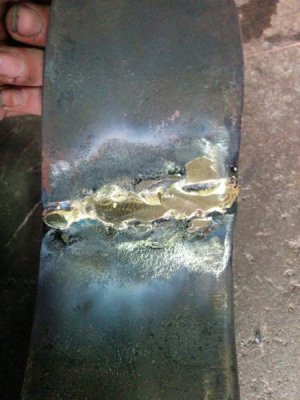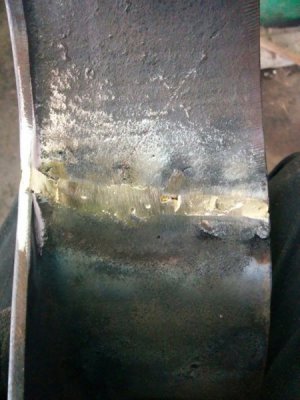Hi Doc, Iam a real fan of sending this kind of work out to a fellow here in Washington that specializes in repairing cast iron parts. You could call Cast Iron Repair, in Smokey Point, Washington. Might actually be Burlington, WA in the phone book. The owners name is Mike. Here is his phone number: 360.657.7660. He has been doing cast iron welding exclusively since the late 1960's and really knows his stuff. Last guy doing this west of the Mississippi I've heard.
you will have some significant risks with brazing. Mainly, if you use to much heat, or to concentrated a flame, you will burn through the edges of the parts. Cast iron melts like butter when you exceed the heat threshold, and big worm holes ensure. So watch your flame, carefully.
Second thing, you must absolutely clean up the edges, so you are dealing with fresh cast iron - sand blasting clean is best.
also, cast iron cracks after 'welding' because often people don't use enuf preheat, OR post- heat. So, you will need to bring the whole piece up to cherry red heat and hold it at that temp for more than 15 minutes. Half hour might be better. Then after completing your operation, hold the part at post heat red for another 15-30 minutes, then keeping it hot, very gradually cool down by wrapping in the fire blanket method, or burying completely in hot sand, overnight.
The ideal method for heating is to use two weed burners, one on each side of the part, with the heat reflected back into the part by a simple three sided fire block furnance, open on the front end, but closed on the bottom, right and left, and back sides. Cracking happens due to inconsistent heating and improper cooling, where the granular structure cools inconsistently - producing internal stresses that eventually - crack. This is a very slow process compared to any kind of stick or tig work on mild steeel. using two burners and a simple fire brick furnance, plus extended cooling down, will really mitigate those internal stresses, and greatly reduce cracking.
As others above have mentioned, Brazing is OK for closing up small cracks and filling voids. but the proper way is to fill and weld the broken area with a similar iron filler.
If you decide not to go through with brazing yourself, you could send Mike the parts via UPS flat rate and he likely will return them to you same way in under two weeks. At least that is my experience. ive taken him five different cast iron parts off machine tools and have had superb results, every time. As you can tell, Iam a big fan. Mike has fixed everything from machine tool castings to piecing back together fractured and broken engine blocks. One was a $15 Mill antique 1930's race car motor - Bugatti or similar- that someone forgot to drain the water out of. The engine froze and cracked into three or four pieces one winter. As it was irreplaceable, the owners sent Mike the bits and pieces and he returned a functioning motor to them. For the small stuff I've taken him, usually I can't tell where the break was when I pick up the repaired part. Sometimes, as in welding through a dovetail, or making a tooth in a gear, you will need to machine out excess filler from around the repair. but with cast iron there is no heat hardening of the material, and the iron machines readily. So anyway, highly recommended. BTW usually he charges me $100 for the kind of work you described in your first post. Last piece was $200, but involved a bit more set up and the afore mentioned dove tail repair meant welding and filling through both sides of a larger rectangular broken 3 HP motor motor mount, that broke along the dovetail after a horizontal mill fell over. So more shop time. Anyway, the plate now looks good as new. Iam confident he would repair your parts to as new condition, should you decide to send to him.
Regards
Glenn



